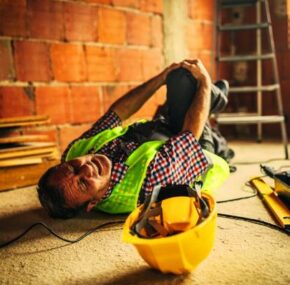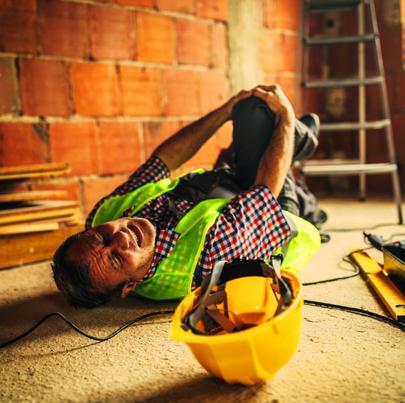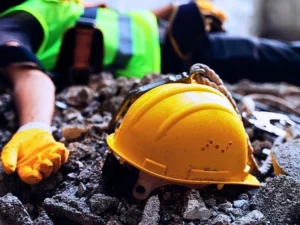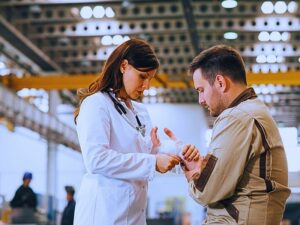A number of types of advanced technological tools have been developed and improved in the last few years to enhance safety in the workplace. A recent report by the Bureau of Labor Statistics (BLS) reveals that there were nearly three million work-related recordable injuries and illnesses across the United States in 2015 alone. Sadly, that same year 4,836 workers lost their lives on the job. In Illinois, more than 145,000 workers suffered work-related illnesses and injuries and another 172 victims were killed. With these staggering statistics, increasing worker safety has been a major focus throughout the nation. Advanced technology just might be the answer.

Advanced Tools Improving Safety
Here are some of the most notable advanced devices that are designed to prevent worker injuries and save lives.
Smartphones Pinpoint Work Hazards
Prevention is key when workplace injuries are involved, and smartphone technology is expected to be the wave of the near future. Rob Radwin, a professor of industrial systems engineering at the University of Wisconsin-Madison, has been studying ways to improve worker risk for repetitive injuries more effectively and efficiently. He has teamed up with his students and professor of electrical and computer engineering Yu Hen Hu to develop an app that will enable smartphones to calculate a hand activity levels. Traditionally, hand movements were tracked manually to measure repetitive injury risk. While this helped professionals to make reasonable judgments, the new technology is more accurate, cost-effective, standardized, and much faster.
In addition, smartphone technology will provide employers of all sizes with a more affordable way to evaluate other types of risks their workers face. By using smartphones to shoot videos of the workplace in motion, employers can more accurately assess injury risk and make the necessary changes to keep their workers safe.
Wearable Technology is Doing Wonders for Workplace Safety
A variety of “workplace wearables” have joined the fight against workplace injuries as well, and they are being used in a multitude of industries.
- Technology in the Trucking Industry: The trucking industry is taking a closer look at new technology that can minimize the risk of trucker fatigue to help ensure that large truck drivers return safely to their families. One such technological tool is the SmartCap system. This specially designed cap looks like a regular ball cap at first glance, but inside it contains sensors that monitor electrical activity in the brain and transmits the information to the employer. The system measures fatigue and alerts drivers and employers of an impaired state.
- Safety for Firefighters, Factory Workers, and Miners: The new Smartwatch is a two-way alert system that includes multiple sensors to detect problems as they arise so they can be resolved more efficiently and effectively. The various sensors monitor the worker’s vital signs continuously and detect noxious gasses and environmental risks to keep workers safe.
- High-Risk Industry Training: SafeScan, an innovative virtual reality headset, is turning novice workers into pros before they ever reach a hazardous location. This fully immersive virtual reality platform is a training tool that enables workers in high-risk fields like construction and manufacturing to learn the tricks of their trades and how to deal with possible challenges while remaining in a safe and comfortable environment.
- Communications Technology Improves Safety for the Oil and Gas Industry: The Smart Helmet by General Electric brings the knowledge and expertise of experienced workers directly to the scene to help guide field engineers through more complex tasks. The system enables two-way audio and video communication between the workers so the more experienced engineer can hear and see everything in real-time. In addition to helping ensure that power outages are fixed faster, the technology puts two sets of eyes in the field to help reduce the risk of unnecessary injuries.
(Article continues below Infographic)

Drones, Robotics, and Remote Control Vehicles Keep Workers Out of Harm’s Way
Traditionally, live, human workers were required to perform high-risk jobs in hazardous situations. While many dangerous jobs still require a human presence, some of the riskiest positions are being filled with advanced technological tools. Some of the most notable include:
- Drones: Drone technology is one of the most innovative ways that modern workers are able to stay safe. Drones are able to survey hazardous areas, monitor job progress, and help employers evaluate safety risks to reduce worker injuries.
- Robots: Commonly seen in modern manufacturing facilities, robots often complete repetitive or risky tasks so that human workers don’t have to. In the United States, more than 115,000 robots handle heavy or awkward materials, assemble products, and do a number of other jobs that could cause workplace injuries.
- Remote Control Vehicles: In some of the most dangerous occupations like mining and construction, remote vehicles pave the way for a safer work environment.







